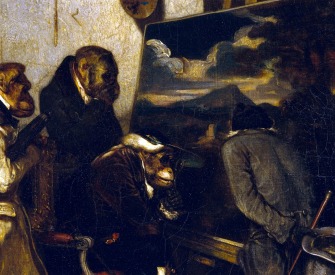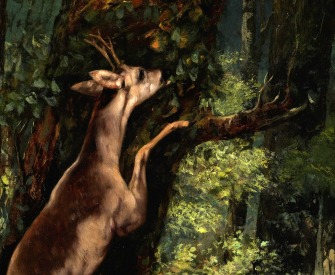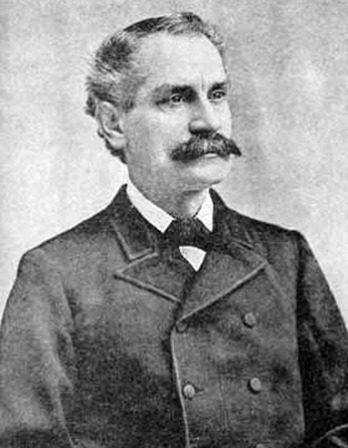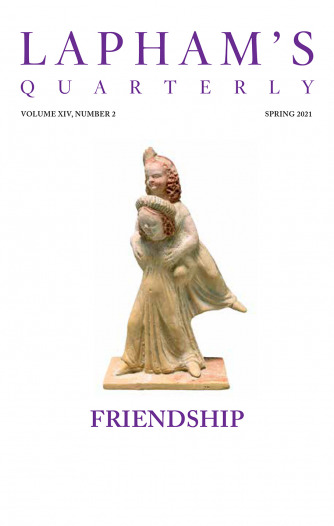The most beautiful makeup of a woman is passion. But cosmetics are easier to buy.
—Yves Saint Laurent, 1978Every Dog Will Have His Day
Dorothy Parker on four-legged fashion.
Fashion is such a far-reaching thing. It isn’t content with all that goes on a woman; it extends to all that goes around, under, and over her. It is responsible for her figure, her complexion, and her state of mind. It won’t even stop at inanimate things—it extends to her very dog. Fancy carrying a short full dog when Paris insists on long straight lines, or trying to combine a Louis XVI–style dog with a moyen-âge gown—well, it simply isn’t done, that’s all.
But one need not despair. So many dogs are smart this season that a woman could really have a different dog for every gown in her wardrobe. There are chows, for instance. They are becoming to almost every woman. One may have a Titian-haired chow or a decided brunette, according to which is the better foil, and he is just the thing to put in the front seat of one’s motor, to fill in that awkward space left by any chance departure of the footman. Chows are most decorative, and they wear a puzzled expression that keeps one interested. One wonders what on earth they are trying to find out. Then, too, they are a shining example to the woman of flirtatious tendencies—the chow is a one-man dog.
If it’s the little things that count in one’s life, one might acquire a Brussels griffon. They are scarcely visible to the naked eye, but they are exceedingly smart this season. A griffon bears a startling resemblance to a small mop that has seen hard service; it is difficult to ascertain, at a cursory glance, which end is going to bark and which to wag.
But fashion isn’t content with a mere chow or two and a handful of griffons. All sorts and conditions of terriers are being done, this season—they are so smart, worn with tailored costumes. Airedales are so popular that they are almost overdone. One can not stroll down Fifth Avenue without encountering an affable Airedale every six feet or so. In color and texture, an Airedale is very like a shredded wheat biscuit. There is such a wistfully angelic expression in his amber-colored eyes that, at first, one fears that he will be snatched up to heaven at any minute; after one has known him for a while, one ceases to worry. He is far from graceful, his manner is absolutely unpolished, he has no savoir faire, and he just can’t make his paws behave. But he has a way with him—and scepters have been tossed aside for that.

Shanghai, China, c. 1930. © Pictures from History / Bridgeman Images.
Fifth Avenue is also densely populated with assorted Scottish terriers—all sorts and conditions of these uncanny Scots. They plod busily along on their utterly inadequate paws, with their overgenerous allowances of tail streaming proudly in the breeze. Their general air is that of those who are burdened with affairs of international importance, and who cannot be annoyed with merely local matters. On those rare occasions when they can be persuaded to sit, they do it with extreme care, neatly arranging their forepaws in the first dancing position. There is something about them that irresistibly reminds one of a fussy little old gentleman—the sort of old gentleman who writes to the newspapers about those disgraceful skirts the women are wearing.
Irish terriers are rather less frequent than their Scottish relations, but they are equally pleasant when one gets to know them. They have all the proverbial charm of their race, and all its propensity to blunders. Their appearance is perhaps a bit sketchily finished, but they have a certain smart simplicity—and besides, all shades of tan are so fashionable this spring.
But perhaps a woman doesn’t care for strictly tailored dogs; she may be the type who wears come-hither bonnets and maiden’s-prayer frocks. For her is the Pekingese or the Pomeranian—those poor little rich dogs. The Pekingese is a particularly exclusive model. He is built on the popular streamlines, and he is just the convenient size to carry about with one through life. He is almost too small to be true, but his self-importance is colossal. No woman who owns a Pekingese can be accused of selfishness; she simply hasn’t the time to think of herself first. He demands the center of the stage as his royal right. He was born to be spoiled. Unquestionably, his place is in the home; he is a canine clinging vine.
The Pomeranian is another lily of the field. He looks like a small muff, but his nature is not half so warm as his appearance. If he doesn’t approve of things—and he usually doesn’t—he tells one so in shrill staccato barks. He graciously tolerates his mistress, and his indifference holds her. That is why so many women are more devoted to their Pomeranians than they are to their husbands. And then they are so decorative—the Poms, you know, not the husbands. There is nothing so chic as a single black Pom against a light frock.
Bulldogs, alas, are not so popular as once they were. We grieve to write it, for theirs are charming personalities, and society was the brighter for them. Collies, too, have said farewell, a long farewell, to all their smartness. Let us not dwell on the harrowing details of these dear departing dogs; there is no greater tragedy than the jilting of fashion. We can only wait for their return to favor.
On wonders what has become of those dogs our infancy knew. Spaniels, for instance—where, oh, where have those little dogs gone? And pugs—why, every maiden aunt used to have at least one pampered pug. Pugs have gone to join the dodo, it seems. There was always something mid-Victorian about pugs; they suggested family albums and wax flowers and pictures of St. Cecilia. A pug had about him an impenetrable atmosphere of respectability. Possibly it could be traced to his portly figure, but probably it was due to his asthmatic tendencies—those who aren’t respectable don’t have asthma.
What becomes of all the last year’s dogs, anyway? When a woman has a wardrobe stocked with bulldogs, and the style suddenly changes to Scottish terriers, what is she going to do about it? She can’t have them made over, unfortunately. She might lay them aside, for the proverbial seven years, until they become fashionable again. She might even bestow them, with her antiquated clothes, on some deservedly poor family. She might send them to the country, to rest their jangled nerves after their social season. Some of them might even enter the Old Dogs’ Home. Every dog has his day—but where are the dogs of yesteryear?

Dorothy Parker
“Love Fashion, Love Her Dog.” Parker worked as a pianist at a dance school until selling her first poem to Vanity Fair in 1914; four years later, at the age of twenty-four, she took over from P.G. Wodehouse as Vanity Fair’s drama critic. A founding member of the Algonquin Round Table, Parker earned a reputation as a sharp-tongued wit. “I don’t want to be classed as a humorist,” she told The Paris Review in 1956. “It makes me feel guilty.” Parker died in 1967, bequeathing her estate to Martin Luther King Jr.




